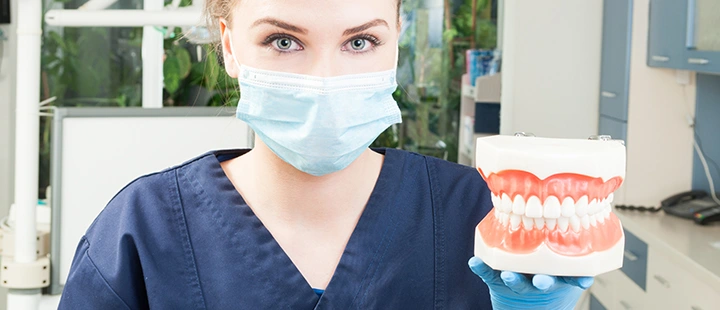Hygienist Support for Dental Case Presentation
Only you, the dentist, can recommend treatment, but in cases that aren’t immediately accepted by patients, members of your staff can have significant influence over dental case presentation. This is especially true for the hygienist.
A Unique Combination of the Professional and the Personal
Patients know that hygienists have received special clinical training—second only to dentists—in oral health care. For this reason, when they express their point of view regarding clinical matters, it carries a lot of weight. This credibility, along with the fact that they are very familiar with the condition of patients’ teeth and gums, means that hygienists can exercise considerable influence over decisions patients make.
Hygienists can play an equally important role in forming and maintaining practice-patient relationships. They typically spend more time with patients than anyone else in a dental office. Although they must perform many tasks during a hygiene appointment, they also have the opportunity to converse with patients—not only educating them about oral health and home care but also person-to-person. With the assistance of scripts and training, hygienists can learn about patients’ lives and interests, making the kind of personal connections that strengthen confidence and loyalty.
How Your Hygienist Can Motivate Case Acceptance
When your patients readily accept the treatment you present, there’s nothing for the hygienist to do except congratulate them on making the right decision and praise you as an excellent dentist totally committed to patient well-being.
On the other hand, if patients don’t agree by the end of your initial presentation, your hygienist can play a greater role in winning eventual consent. To make the most of this opportunity, follow these steps:
- Familiarize your hygienist with what you’ve presented and why, as well as patients’ reactions and comments. Only if your hygienist understands the situation will she be able to endorse your recommendation when she has an opportunity to do so.
- The next time patients with pending treatment visit the practice, alert the hygienist at that day’s morning meeting. Your hygienist (not to mention other team members who will interact with these patients) needs to be aware that she may be able to help patients reach the right decision that day.
- Your hygienist should watch for an opportunity to bring up the subject with patients. While working chairside, she should find a way to discuss your recommendation. She should use her judgment about how to do so. It may take the form of a simple question (“Have you had a chance to think more about the treatment Dr. Smith recommended?”) or a more substantive conversation about the dental condition, why the treatment makes sense, what the procedure would be like, etc. Your hygienist’s personal knowledge of the patient will guide her as to how to broach the subject.
- Your hygienist should report to you regarding her interaction with the patient. Take a moment before coming into the treatment area to find out what transpired and decide what you should say to the patients regarding your recommendation.
Your hygienist may not be able to recommend treatment, but she can certainly influence acceptance if you and she approach it the right way.
Author
This resource was provided by Levin Group, a leading dental consulting firm that provides dentists innovative management and marketing systems that result in increased patient referrals, production and profitability, while lowering stress. Since 1985, dentists have relied on Levin Group dental consulting to increase production.



